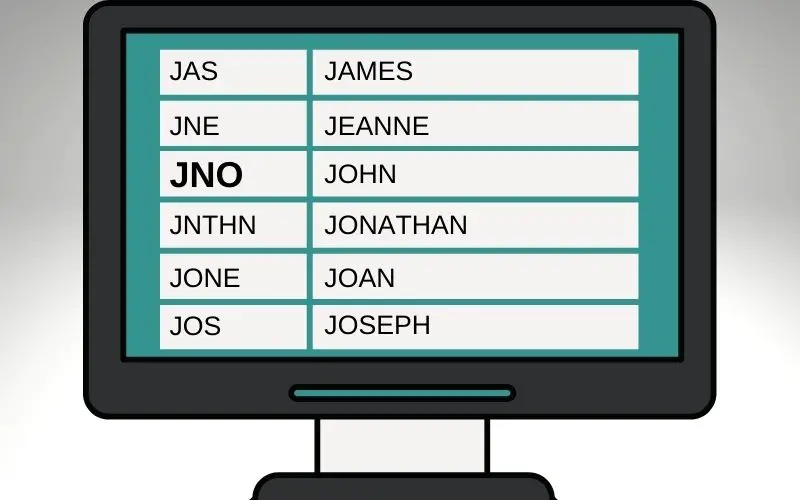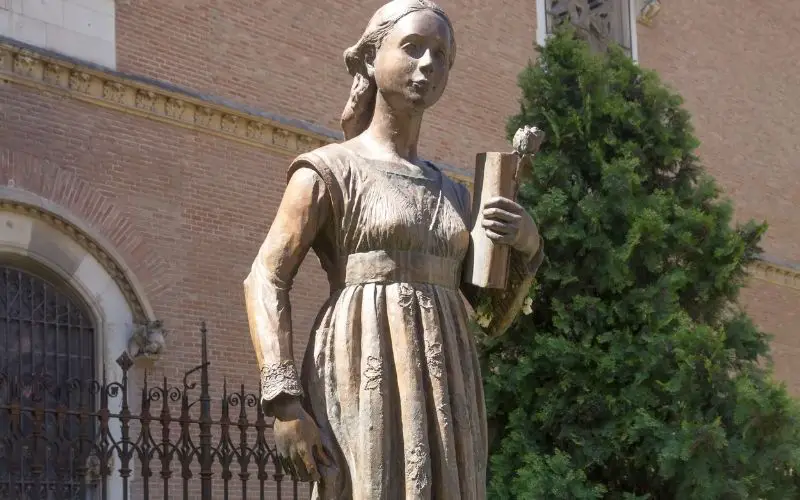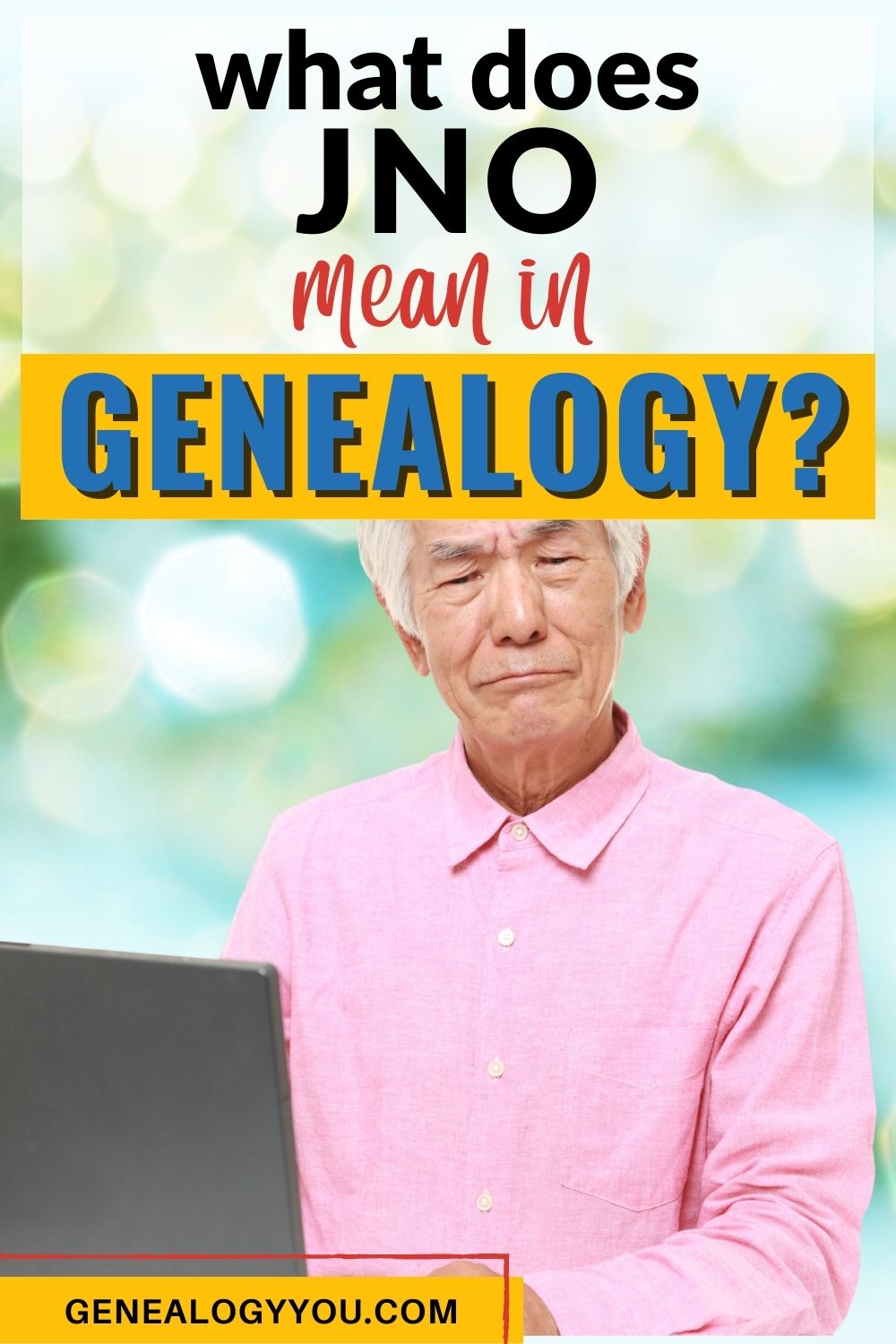Inside: What does Jno mean in genealogy? It’s probably the most common name of all.
If you’ve been looking through family history to any extent, you are undoubtedly finding strange things.
From names you’ve never seen before to locations you’ve never associated your family with, you never really know what you’re getting into when finding a common ancestor.
With all the surprises you come across, there’s one that you don’t often expect.

Unexpected Abbreviations
In the beginning, to help whoever was doing a census at the time, there were shorthand versions of names. This was widespread, so there were some that were standard, especially for common names.
What did JNO stand for? It was simply an abbreviation for John. Not to be mistaken for JNTHN for Jonathan. Another example of names in different forms is JAS for James or HY for Henry.
There are a ton of letter combinations that are related to full names of ancestors that would give you a moment of pause. Here are some other popular examples to discover:
- Alc for Alice
- Chs for Charles
- Elizh for Elizabeth
- Ths for Thomas
- Wm for William
Other Abbreviations
Aside from names, there are other shortened phrases worth mentioning. You never know what kind of info you’ll come across that you will need a definition for.
MNU
Maiden Name Unknown. This was for a married female that did exist in the census but for whatever reason, her maiden name did not.
UNM
Unmarried. A census taker would always get the facts, as much as they could, anyway.
GGF
Great Grand Father.
b. or bn, bur
This refers to either date of birth or date of burial.
d.
Not to be confused with bur., d. signifies the actual date of death.
dsp
Speaking of ancestors and death, this one means that the person’s death went smoothly. Always good to know.
Tutor
To our ears in today’s world, this sounds like a teacher. Most likely though, if you’re looking at a census record, it pertains to the guardian of a child.
m., m1, m2, etc.
Marriage. This would typically be followed by dates that would describe when the marriage(s) took place. Depending on when ancestors lived with this by their name, it might be a scandal worth checking into.

Name Changes
As seemingly random as some of the shortened forms were, it was all quite strategic. You could compare it to court reporting, where everything looks like a jumbled mess.
To the knowledgeable eye, however, it all makes sense.
Spelling wasn’t quite as organized, at least not for a long time. If you’ve been researching far enough back, you’ll notice inconsistencies in how names are represented by the same family members.
This is as recent in family history as Europeans coming through Ellis Island to start a new life in America. It wasn’t uncommon for families to change how their name was spelled for the records.
Of course, sometimes it wasn’t the incoming families that made the decision. Whether the name was heard wrong or an employee was being negligent, records show a name spelling error.
Then it was submitted incorrectly from there on.
History of Spelling

It wasn’t too long ago that the spelling of one’s own name would vary from document to document.
The best examples of that can be found famously by the mother of Queen Mary, and wife of King Henry VIII, Queen Catherine of Aragon.
Here are the ways she and others spelled her name over the years:
- Katherine
- Katherina
- Katharine
- Katharina
- Queen Kateryn, as written by Mary
- Princess Katerine, as written by Henry
That wasn’t necessarily the entire list but you get the idea. There wasn’t really a reliable dictionary so everyone just assumed many words, the definition, and spelling.
Evolving Names
Letters can be switched around in writing for a number of reasons. By the time we started spelling things more cohesively, it was time to add a middle name.
There were too many Johns and Marys to keep up with without some way to differentiate them.
By the 1600s, the population was growing and middle names were brought in to identify people better. Imagine a will where you inherit property. Without a middle name, someone else by that name could attempt to lay a claim on it.
Or being listed in records for owning a business. These are good examples where more identifiers make a difference.
Family History Searches
That’s why when you’re researching and gaining access to family records, it helps to know things like a name abbreviation for John or how one letter can change the name completely.
The more you discover, the more used to the process you’ll be. Things you find on a census document or initials on a picture will make more sense.
Creating a Family Tree

Luckily, we live in a time where you don’t necessarily have to have middle names or records to find out to what degree you are connected to someone. DNA tests have helped take some of the guesswork out.
Considering there are millions of people on the sites now, it gives deeper meaning to building a family tree in conjunction with the test results. You can even see people in other countries you are connected to by blood.
Finding people you could have a conversation with that is from a group you never knew about would be enlightening.
Everything you’ve discovered in your findings of the family’s descent will come in handy, even the JNO abbreviation.
Hiring a Professional
If you don’t have the time to devote, it might be frustrating to learn all the nuances of each page you come across. Or things like whether something you’re looking at is valid for your family.
Whether you hire someone to do your genealogy search or to help with a section, it might be a great learning experience.
A good explanation could lead to the development of your own skills to look up a John, JNO, or two of your own.
Related: What Does Degrees Mean in Genealogy?


